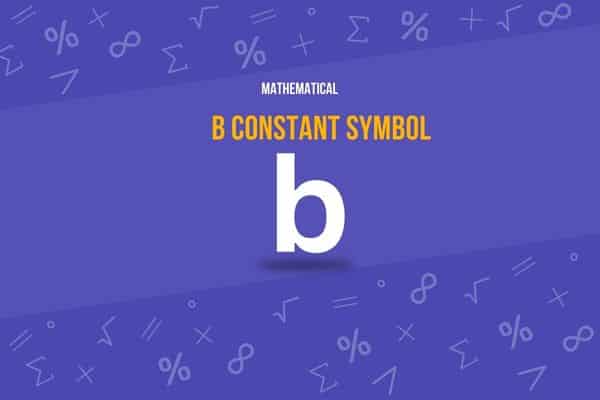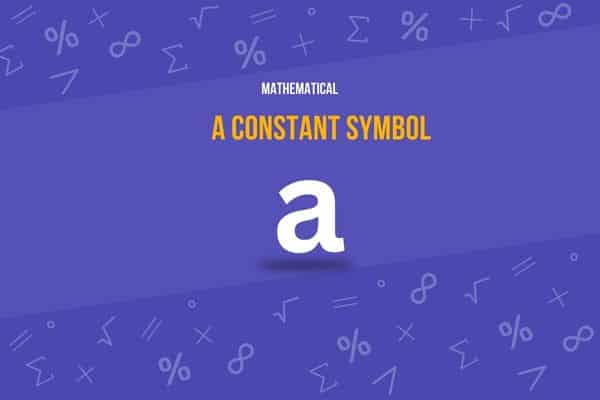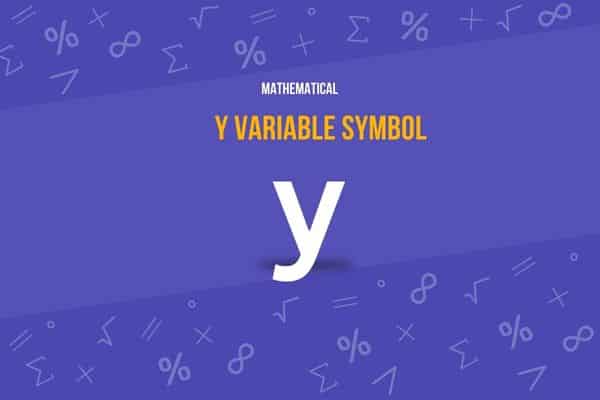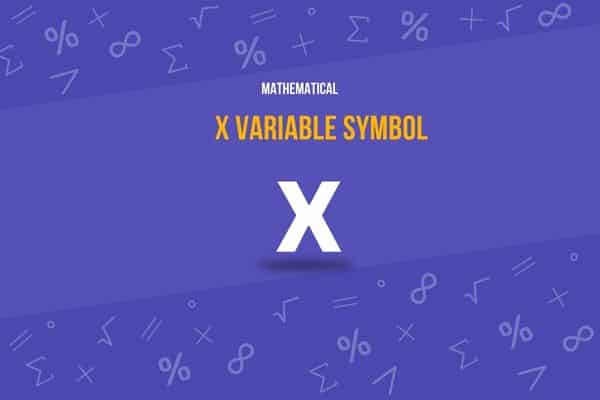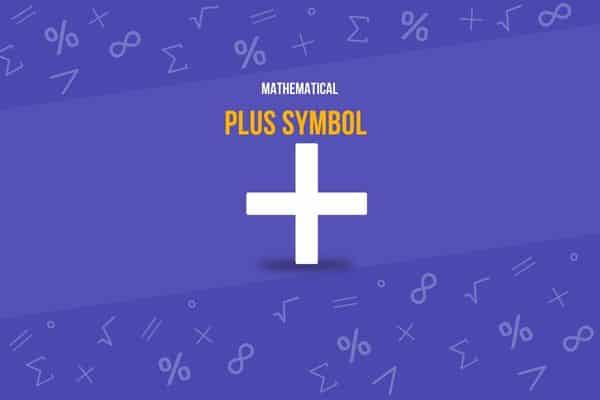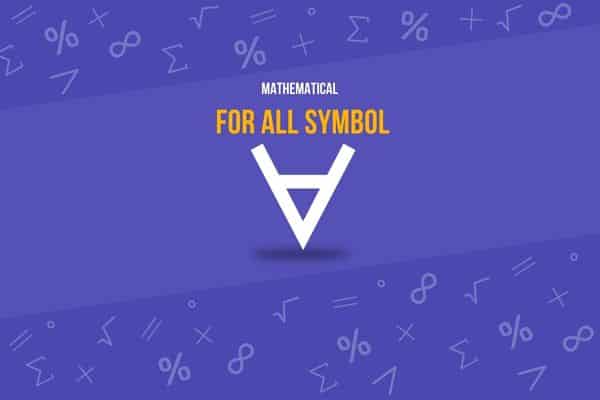What is the Less Than or Equal To Symbol?
You’re here because you’ve seen the less than or equal to symbol, and you’re curious about its history, meaning, and applications, aren’t you? It’s a neat little symbol, ‘≤, ‘that holds great importance in various fields such as mathematics, computer science, and logic.
Are you ready to unlock a new level of knowledge and become even more conversant with this ubiquitous symbol?
Read on, and let’s explore!
Fast Facts
≤
Less Than or Equal To Symbol
Less Than or Equal To Symbol (≤) Overview
Here’s a table containing detailed information about the “Less Than or Equal To” symbol (≤):
| Attribute | Description |
|---|---|
| Symbol Name | Less Than or Equal To |
| Unicode | U+2264 |
| Image | ≤ |
| Brief Description | Used to denote that a value is less than or equal to another. |
| Unicode Version and Date | Unicode 1.1.0 (June 1993) |
| Unicode Block Name | Mathematical Operators |
| Plane | Basic Multilingual Plane |
| Script | Common |
| Category | Symbol, Math |
| Bidirectional Class | Other Neutral (ON) |
| Combining Class | 0 |
| Character is Mirrored | No |
| HTML Entity | ≤ or ≤ |
| CSS | \2264 |
| UTF-8 Encoding | E2 89 A4 |
| UTF-16 Encoding | 2264 |
| UTF-32 Encoding | 00002264 |
Here’s What You Will Find
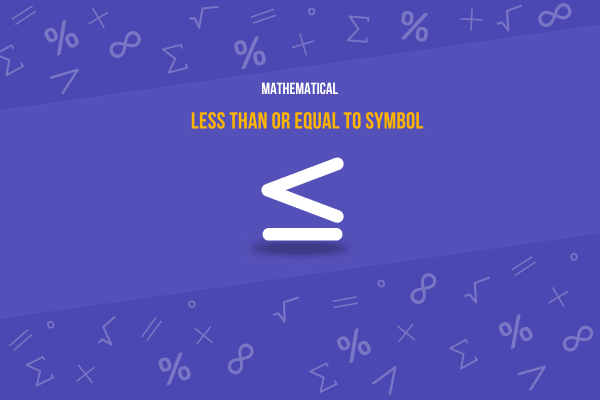
Less Than or Equal To Symbol
The less than or equal to symbol denoted as “≤, “is a mathematical symbol used to express a relationship of inequality between two values. This notation implies that the value on the left of the symbol is either less than or equivalent to the one on the right.
For instance, in the statement “3 ≤ 5”, it’s understood that 3 is less than 5. Similarly, “7 ≤ 7” means 7 is equal to 7. Beyond mathematics, this symbol also plays a vital role in computer programming, where it’s used in conditional statements and loops, contributing to the logical and functional flow of code. Overall, it’s an essential tool to describe and solve problems involving inequalities.
Other Names
The less than or equal to symbol “≤” is known by several different names depending on the context in which it is used. It’s often called the “inequality symbol” or “less than or equal to operator” in a mathematical setting. When used in computer programming or coding, it’s typically called a “comparison operator” or “relational operator.”
In logic and set theory, it’s known as the “subset of or equal to” symbol, which signifies that one set is a subset of another or that the two sets are equivalent. Despite the various names, the fundamental concept of expressing a relationship of inequality or equivalence remains consistent.
Less Than or Equal To Symbol Meaning
The “Less Than or Equal To” symbol (≤) is a mathematical symbol used to indicate that the value on the left side is either less than or equal to the value on the right side. This symbol is crucial in mathematics for defining ranges, expressing inequalities, and setting conditions within equations and mathematical proofs.
The less than or equal to symbol “≤” is a mathematical notation that signifies an inequality relationship between two values. When you see “a ≤ b”, it means that “a” is either less than “b”, or exactly equal to “b”. The beauty of this symbol lies in its ability to encapsulate two possible relationships within a single notation.
The direction of the arrowhead, which points to the left, visually indicates that the value on the left side of the symbol is the smaller one or possibly equal to the value on the right. This makes it intuitive and easy to understand, even for those new to mathematical symbols.
Symbolism of the Less Than or Equal To Symbol (≤)
The “Less Than or Equal To” symbol (≤) carries significant symbolism in mathematics and beyond. It represents the concept of limitation and boundedness, succinctly conveying that one quantity does not exceed another.
This symbol encapsulates the notion of equality and fairness, as it includes the possibility of being equal, unlike the strict “Less Than” symbol. In real-world contexts, it can symbolize constraints and conditions that define boundaries, such as legal limits, physical capacities, or resource allocations.
The symbol is a foundational element in educational settings that helps students understand and visualize relationships between numbers and variables. Its use in algorithms and programming extends its meaning into logical conditions that must be met for certain actions to occur, emphasizing the symbol’s role in decision-making processes.
Thus, the “Less Than or Equal To” symbol is a mathematical tool and a broader metaphor for balance and comparison in various aspects of life and science.
Less Than or Equal To Symbol Unicode
Unicode is a universal standard that assigns a unique number, called a code point, to every character used in written languages. This allows for consistent encoding, representation, and handling of text data. Unicode encompasses virtually all characters from all writing systems in use today, as well as a multitude of symbols, punctuation marks, mathematical signs, and even emojis.
The less than or equal to symbol “≤” has its unique Unicode designation: U+2264. This Unicode representation allows it to be universally recognized and reproduced across different platforms and software.
So, no matter where you use this symbol, as long as it’s coded as U+2264, it will consistently be displayed as “≤, “facilitating seamless global communication and comprehension.
Less Than or Equal To Symbol Uses
The “Less Than or Equal To” symbol (≤) is widely used in various mathematical contexts. Here are some of its primary uses:
- Inequalities: It expresses that one quantity is either less than or equal to another. For example, (x ≤ 5) states that (x) can be any number up to and including 5.
- Constraint Setting in Problem Solving: In optimization problems involving linear programming, ≤ sets constraints that the variables must satisfy.
- Conditional Expressions: In programming and algorithms, this symbol helps make decisions based on being less than or equal to a certain value.
- Mathematical Proofs: It demonstrates that a certain property holds within specified limits.
- Interval Notation: In expressing intervals, the symbol ≤ is used to denote that the endpoint is included in the interval, such as in the interval ([0, 10]), which includes all numbers from 0 to 10.
Each use helps to define relationships and constraints, making it an essential tool in mathematics, computing, and related fields.
Less Than or Equal To Symbol Examples
The “Less Than or Equal To” symbol (≤) is applied in various scenarios to express relationships between numbers or variables. Here are some examples to illustrate its use:
Numeric Comparison
- (7 ≤ 10): This states that 7 is less than or equal to 10.
- (5 ≤ 5): This demonstrates that 5 is equal to 5, satisfying the condition of being less than or equal to.
Variable Constraints
- If (x ≤ 8), it means that (x) can be any number from negative infinity up to and including 8.
- In the inequality (2x + 1 ≤ 5), solving for (x) gives (x ≤ 2).
Algebraic Expressions
- (x^2 – 1 ≤ 0) suggests that the expression (x^2 – 1) yields results up to zero, valid for (x) values within the interval ([-1, 1]).
Practical Situations
- A store discount policy might state that a purchase of (x) items qualifies for a discount only if (x ≤ 50), indicating a maximum limit for discounted items.
- In a parking area with a height restriction, a sign might read “Vehicles with height ≤ 2.5 meters allowed,” setting a clear limit for access based on vehicle height.
These examples show how the “Less Than or Equal To” symbol effectively communicates limits, conditions, and relationships in everyday math and real-world applications.
In computer programming, the symbol is used as a comparison operator in conditional statements, such as if-else and while loops, helping guide the logic flow of a program.
For instance, in a Python script, the expression “if x <= y:” would mean “if x is less than or equal to y, perform the following actions.” These diverse applications of the “≤” symbol underline its significance in conveying relationships of inequality or equivalence across multiple disciplines.
Why is the Less Than or Equal To Symbol Important?
The importance of the less than or equal to symbol “≤” lies in its universal role as a fundamental tool in communicating mathematical, logical, and coding concepts. Its core function of representing a relationship of inequality or equivalence is crucial in various problem-solving scenarios, ranging from simple arithmetic to complex algebraic equations.
Computer programming is fundamental to decision-making processes, enabling developers to control code flow based on specific conditions.
Furthermore, statistics and data analysis are key in expressing ranges and distributions and testing hypotheses. Succinctly expressing these vital concepts would be more challenging without this versatile symbol. Its importance is further reinforced by its inclusion in the Unicode standard, which ensures its consistent representation in global digital communication.
Less Than or Equal To Symbol History
The “Less Than or Equal To” symbol (≤) has an interesting history in the development of mathematical notation. It is part of a broader evolution of inequality symbols that began to appear more prominently in the 16th and 17th centuries.
The use of inequality symbols, including the “Less Than” (<) and “Greater Than” (>) symbols, is generally attributed to Thomas Harriot, an English mathematician, who introduced them in a manuscript around 1631. However, other mathematicians did not immediately adopt these symbols.
The specific symbol for “Less Than or Equal To” (≤) and its counterpart “Greater Than or Equal To” (≥) were developed later. These symbols were likely influenced by the need to express non-strict inequalities clearly and succinctly in mathematical writing and calculation.
In practice, the ≤ and ≥ symbols serve as extensions of Harriot’s original symbols by incorporating the line under the less than and greater than signs to denote the inclusivity of the number being compared. This allowed mathematicians and scientists to express a broader range of mathematical concepts and relationships more efficiently.
Over the centuries, these symbols have been standardized and are now universally used in textbooks, academic papers, and digital content worldwide. They form a fundamental part of the notation in algebra, calculus, and many other branches of mathematics.
Less Than or Equal To Symbol Origin
The origin of the “Less Than or Equal To” symbol (≤) is tied to the broader development of mathematical notation, especially the symbols used to represent inequalities. The specific symbols for “less than” (<) and “greater than” (>) were introduced by Thomas Harriot, an English mathematician, in his manuscript around 1631. Harriot’s work focused on navigational and algebraic problems, and he used these symbols to compare the sizes of terms.
The extension to include equality, resulting in the “Less Than or Equal To” (≤) and “Greater Than or Equal To” (≥) symbols, appeared later as mathematicians sought more precise ways to express equations and inequalities that included equality as a possibility. These adaptations likely developed as an evolution of Harriot’s original symbols, adding a line beneath them to signify the inclusion of equality.
The widespread adoption of these symbols in mathematical texts and their standardization occurred over the following centuries as mathematical notation became more refined and universally understood. Today, these symbols are integral to mathematical language, facilitating clear and concise expressions of relational concepts across various fields of study.
Evolution of the Less Than or Equal To Symbol
Interestingly, the less than or equal to symbol “≤” has remained largely unchanged since its inception, a testament to its simplicity and effectiveness in conveying the relationship it represents. The symbol was developed as an extension of the “less than” symbol, with the addition of the horizontal line underneath to indicate the possibility of equality.
Over time, this symbol has been standardized across various domains, from mathematics and science to computing and coding languages.
Less Than or Equal To Symbol In Everyday Life
The less than or equal to symbol “≤” may seem like a small, simple notation, but its symbolism can resonate deeply, particularly if we look beyond its mathematical implications. In essence, it represents a concept of limit or boundary that is not absolute but flexible, accommodating equality.
This principle can be applied to various aspects of daily life, especially in setting personal boundaries and goals. When setting a goal, for instance, you could aim to exercise for “≤ 30 minutes” each day. This gives you the flexibility to do less on a busy day without feeling guilty while still maintaining the opportunity to do exactly 30 minutes of exercise, or even more if you’re up for it.
These are just a couple of ways the principles embodied in the less-than-or equal a symbol can be woven into daily routines. This mathematical symbol can remind us of the balance between flexibility and firmness in our personal lives.
Last Thoughts
The journey through the world of the less than or equal to symbol “≤” has certainly been intriguing. This humble symbol holds a fascinating depth of meaning, history, and application, beautifully illustrating how symbols can transcend their technical origins to influence various aspects of life. Don’t forget to check out the range of merchandise available—t-shirts, mugs, posters, and more—featuring the “≤” symbol.
Not only do these items serve as great conversation starters, but they also allow you to carry a piece of this mathematical charm with you. The world of symbols is vast and intriguing, and the less-than-or-equal symbols are just the beginning of what’s out there.
Before You Go
Don’t stop here—there’s a whole universe of other fascinating symbols and signs waiting for you to discover, each with its rich history, meaning, and application.
If you found this information interesting, please consider sharing this post with your friends and colleagues! Spreading knowledge is a wonderful way to foster learning and curiosity.
By sharing, you contribute to others’ understanding and promote discussions that can lead to more insights and discoveries. Let’s keep the conversation going and ensure valuable information reaches as many people as possible!

